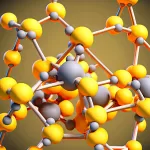
What is the exact role of the prostate gland, its relationship with other processes in the body and how to minimize the risk of health problems? Our material covers all these topics and a little more.
What is Prostate Gland
The briefest definition would sound like “a small chestnut-sized gland belonging to the AMAB persons’ reproductive system”.
Size and location
The normal prostate gland is the size of a chestnut. It weighs approximately 30 g (1 oz). The prostate gland is located inside the body, just below the bladder and in front of the anus (so it can be reached from there).
Its name originates in Ancient Greece and descends from the expression that translates as “the one who stands before”. That refers to the relative positioning of the bladder and the prostate if you look from the point of down below.
Structure
Urologists distinguish 4 zones in the gland structure:
- Anterior zone in front of the gland consists of muscle and fibrous tissues.
- Transition interior lobe encloses the urethra and constitutes about 10% of the organ. With aging, it tends to grow. The occurrence is referred to as benign prostatic hyperplasia. It has a non-cancerous nature but the excessive tissue may add pressure on the organs and vessels of the urinary system causing urination-related complications.
- Central zone is roughly a quarter of the prostate’s total weight. It surrounds the transition lobe similarly to layers of an onion and protects the ejaculatory duct.
- Periferal zone is located towards the back and concentrates up to 70% of the glandular volume. It is the most prone to cancerous formations lobe.
A stretchy material called prostate fascia covers the organ. It has a connective and protective role.
Blood vessels and nerves
The circulation of blood in the prostate gland occurs as follows:
- The internal pudendal and iliac arteries and middle rectal arteries branch into the prostatic arteries which carry the oxygen-rich blood to the gland.
- The internal iliac veins and the internal vertebral venous plexus are connected to the prostatic venous plexus which takes the blood from the gland.
The inferior hypogastric plexus provides sensory, parasympathetic, and sympathetic innervation for the gland. And its smooth muscular tissues are innervated by sympathetic fibers that activate during ejaculation.
Prostate Gland and Male Fertility
The prostate in the male reproductive system has several functions directly affecting the ability to conceive. It makes up a third of the volume of the sperm fluid, and, without it, DHT production and proper ejaculation are impossible. Consequently, the procedure of radical prostatectomy (when the organ is surgically eliminated) causes infertility. For those planning on having a child, their healthcare specialist may suggest collecting sperm before the procedure and freezing it for future artificial insemination.
Functions of the Prostate Gland
Let us break down every functional process that occurs in the prostate.
Production of prostatic fluid
The fluid creates an optimal medium for the sperms (including the nutrients) and enhances their chances of survival when they move to reach the egg. One of its constituents, PSA (an abbreviation for a prostate-specific antigen), causes the sperm to become more liquid and thin to increase the motility of sperms.
Ejaculation control
When men ejaculate, the contraction of the prostatic muscle squeezes the prostatic fluid out to the urethra. There, it blends with the fluids released by the testicles and seminal vesicles creating the semen. It also closes up the bladder together with the bladder’s sphincter so that sperm will not enter it.
Hormone metabolism
The prostate turns testosterone into its biologically active metabolite called dihydrotestosterone.
Maintaining prostate health
Men often neglect health information regarding their reproductive functions while preventive care is essential to inhibit BPH, avoid urinary and inflammatory issues related to the enlarged prostate, and lessen the risk of developing prostate cancer. Preventive care includes maintaining a healthy lifestyle and regular visits to your family doctor or a urologist.
Medical check-ups
Regular check-ups are important because they allow doctors to catch the health issue at its early stage when it is more treatable. When the condition has been detected as soon as possible, its treatment is simpler and inexpensive, with higher chances of success, and the patient’s quality of life is preserved.
The check-up will likely include a survey and a physical exam. If your doctor will need some specific information, additional tests may be in order.
Diet and lifestyle factors
Your nutrition, physical activity, and general lifestyle have a drastic impact on your wellness. Ditching bad habits and exercising will improve the state of your cardiovascular system and, therefore, supply of oxygen and nutrients to the prostate in particular and organs and tissues in general.
Some foods and drinks are especially healthy for the prostate. The list includes:
- Green tea;
- Nuts and seeds;
- Cruciferous vegetables;
- Tomatoes;
- Fatty fish;
- Pomegranates;
- Red berries.
While some products, such as red meat and processed foods, are better to be avoided.
PSA testing
The test includes a blood sample taken from the patient to measure the PSA rate. The too-high level may indicate inflammation or the growth of a cancerous formation. It is vital for diagnosing the condition at its earliest stage while it is perfectly treatable.
Summary
The health of the prostate correlates directly with male fertility and sexual health. To reduce the risk of prostate health issues, such as prostatitis, BPH, or cancer, and detect them as early as possible, it is recommended to undergo regular health check-ups and maintain a wholesome diet and general lifestyle.
FAQ
Hormone metabolism, sperm fluid release, and regulation of ejaculation.
The man will be not able to conceive a baby through sexual intercourse and may experience troubles with erectile function (their degree depends on the type of surgical intrusion).
The prostate can be reached from the anus as it is right in front of the rectum and below the urinary bladder. The organ promotes fertility in AMAB people.
It produces DHT and up to a third of sperm fluid. It is also responsible for the proper ejaculatory process.







